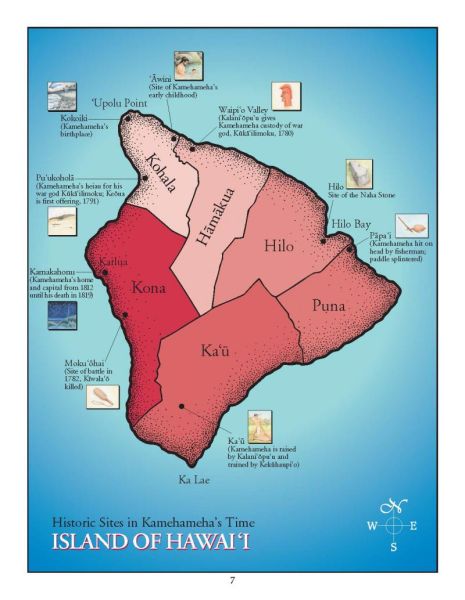Digital Collections
Celebrating the breadth and depth of Hawaiian knowledge. Amplifying Pacific voices of resiliency and hope. Recording the wisdom of past and present to help shape our future.
Neil Hannahs
LAD (Land Assets Division) holds as a primary responsibility the ethical, prudent, and culturally appropriate stewardship of Wahi Kūpuna (ancestral sites inclusive of all cultural resources and iwi). We honor our kūpuna, the foundation upon which we stand: their history, their values, the knowledge they have passed down to us, and the wahi kūpuna left in our care.
The land legacy inherited from Pauahi and Charles Reed Bishop links Kamehameha Schools to a chiefly lineage and the special relationship these individuals had to 59 ahupua‘a and ‘ili on five islands. These lands represent places of significance to the Kamehameha ‘ohana. The privilege of their conveyance into the Trust must be associated with a kuleana to honor and mālama our ancestral connections to these significant places. At the Māhele, these lands were selected by the ali‘i for the spiritual and economic wealth they could bestow to their descendants and the Hawaiian people. Today, these cultural landscapes and resources allow greater understanding of our kūpuna, historical traditions and cultural heritage.
As we dispatch our duties, LAD staff have the opportunity to witness, experience and mālama this waiwai ma ka honua. Our efforts to connect our people to these resources in support of their educational development and well-being result in the ‘Āina Ulu programs that have grown at a phenomenal pace since their inception in 2000. Our stakeholders are not the only ones who are moved by these experiences. LAD staff are often awestruck by the beauty of our "jobsites" and overcome with an understanding of what a privilege it is to be entrusted with the kuleana of stewardship of these precious Trust assets.
After a recent trip to Honokāne in Kohala, I was inspired to express some of my manaʻo in poetic form. Ulalia Woodside provided helpful suggestions about form and word choice. She also envisioned that the sharing of this mele might motivate others to document their thoughts of our Wahi Kūpuna. These creations could be compiled into a wonderful collection that will evidence the inspirational qualities of these assets.
My daughter Līhau, an accomplished haku mele, and her boyfriend Kellen Paik, who is pursuing a masters degree in Hawaiian Language at UH-Mānoa, also helped to paka the mele. These ‘ohana discussions about our ‘āina and language brought our institutional goals for nohona Hawai‘i into our home. E ola Hawai‘i!
Mo‘olelo
On May 5, 2006, I had the opportunity to make my first visit to the remote valley of Honokāne on the rugged windward coast of Kohala with Ulalia Woodside and stream biologist John Ford. The weather made getting there an adventure. We lifted off of the airstrip at Waimea and flew into a dense cloud bank that enveloped the Kohala Mountains. I couldn’t see ten feet ahead of us for much of the flight. We finally broke through the cloud bank at Kapa‘au.
Before setting down at the stream mouth of Honokāne, our expert pilot, David Okita, flew us over the upland of ‘Āwini and traced the trails that were used to construct and maintain the intakes and tunnels of the Kohala Ditch. This directly related to our mission of improving our understanding of the ditch system and gaining an appreciation for the landscape that shaped Kamehameha’s character when he was taken under protective care to ‘Āwini shortly after his birth.
We set down to disembark the helicopter at the stream mouth and hiked from there about a mile and a half upstream. Along the way we looked for life in the stream. After our immediate find of some āholehole in a pond of water near the shore, we were disappointed to encounter long reaches where the stream bed was dry.
A constant, drenching rain showered and refreshed us during the hike. When we weren’t observing the stream, we were awestruck by the steep canyon walls that towered over us. At the mile and a half point, we were rewarded by a running portion of stream that contained a robust population of ‘o‘opu and hihiwai. Perhaps it was no coincidence that over that very spot we looked up to the unusual sight and calls of an ‘io couple who patrolled the air like sentries guarding a treasure.
After snorkeling in the chilly waters to observe fish and prawn behavior, we were picked up by David and flown a few more miles upstream. We landed on the top of a forty foot high dam that blocked the vigorous mauka flows and diverted 90% or more of the water into a tunnel that transported the resource to the arid lands along the north and west facing ahupua‘a of Kohala.
From there we flew to the back of the valley and were treated to the sight of waterfalls that adorned the upright valley like a bead curtain. As we flew back to Waimea, we re-entered the fog, but the images of an inspiring land and resilient species burned brightly in my mind.

image credit: Kamehameha Schools
A map of Hawaiʻi that marks many sites with historical significance to Kamehameha I.